Sketches From Tanzania’s Safari
November 2, 2019
In February 2019 my wife and I encouraged two other couples to join us on Tanzania: The Great Migration Safari with Wilderness Travel. The Wilderness team certainly delivered what we were looking for in every respect. Before we arrived in Tanzania one of our friends said that what she really wanted to see was a giraffe. She wondered whether she would have an opportunity to see one. I told her that when Liz and I visited Africa the first time that the very first animal we saw as we landed on a dirt strip was a giraffe.I told her that I was confident she would see a giraffe. Sure enough as we landed in the Serengeti the very first animals we saw was a family of giraffe crossing the grass airstrip shortly after we landed.
Overtime I plan to paint some of the many animals we encountered during our trip. However, in this series of paintings I concentrated on the vibrant clothing and ornamentation of the wonderful Maasai people, especially of our Maasai guide, Lekoko.
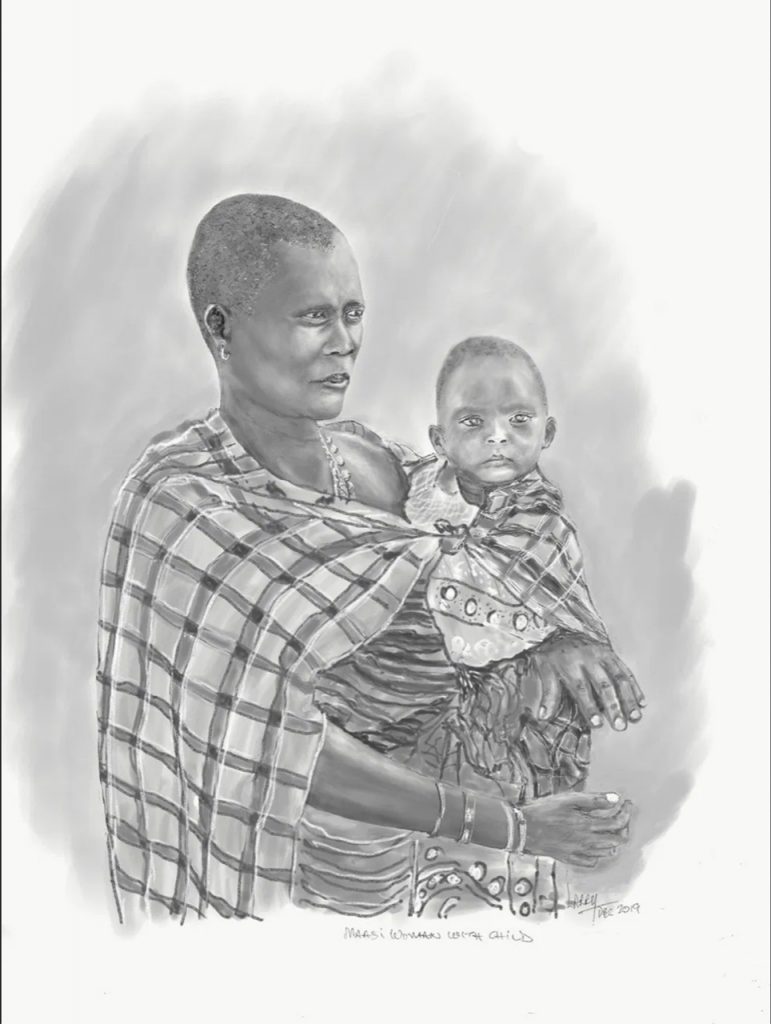
A Maasai mother with a child. Although this sketch is in black and white, I tried to capture the textures of the colorful clothing… each layer a different pattern and hue. I was also surprised to see that almost all of Maasai cloths have a plaid weave.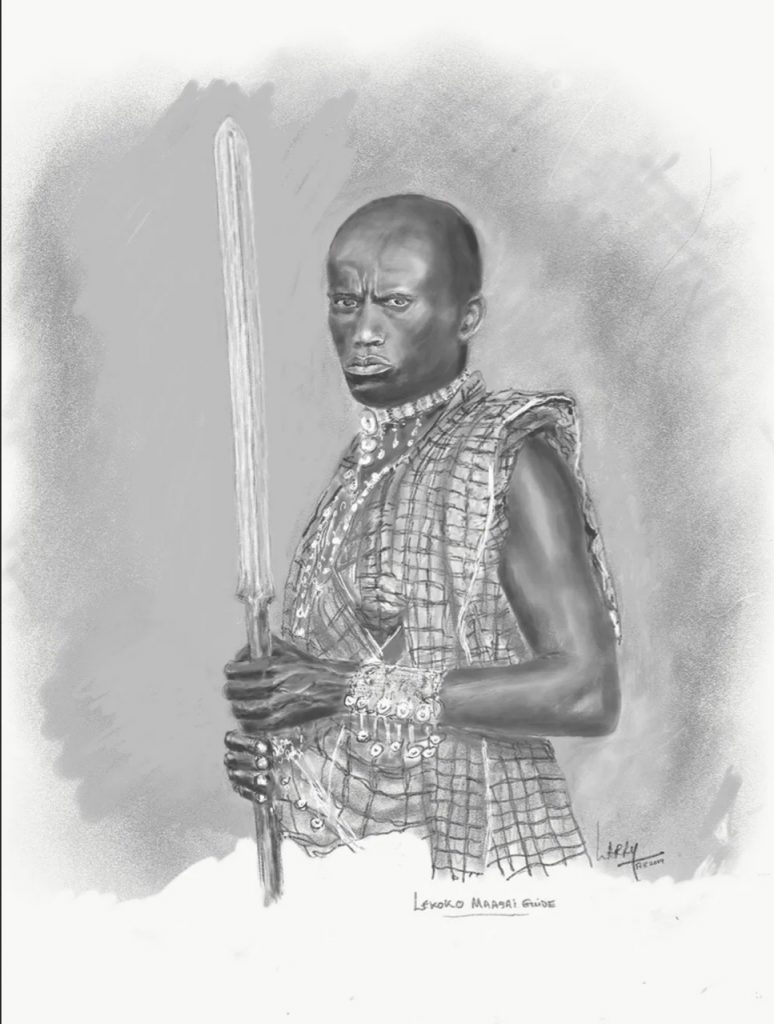
This black and white sketch of Lekoko, our Maasai guide, again shows off the wonderful textures of the Maasai clothing and the exquisitely designed armbands and necklaces.
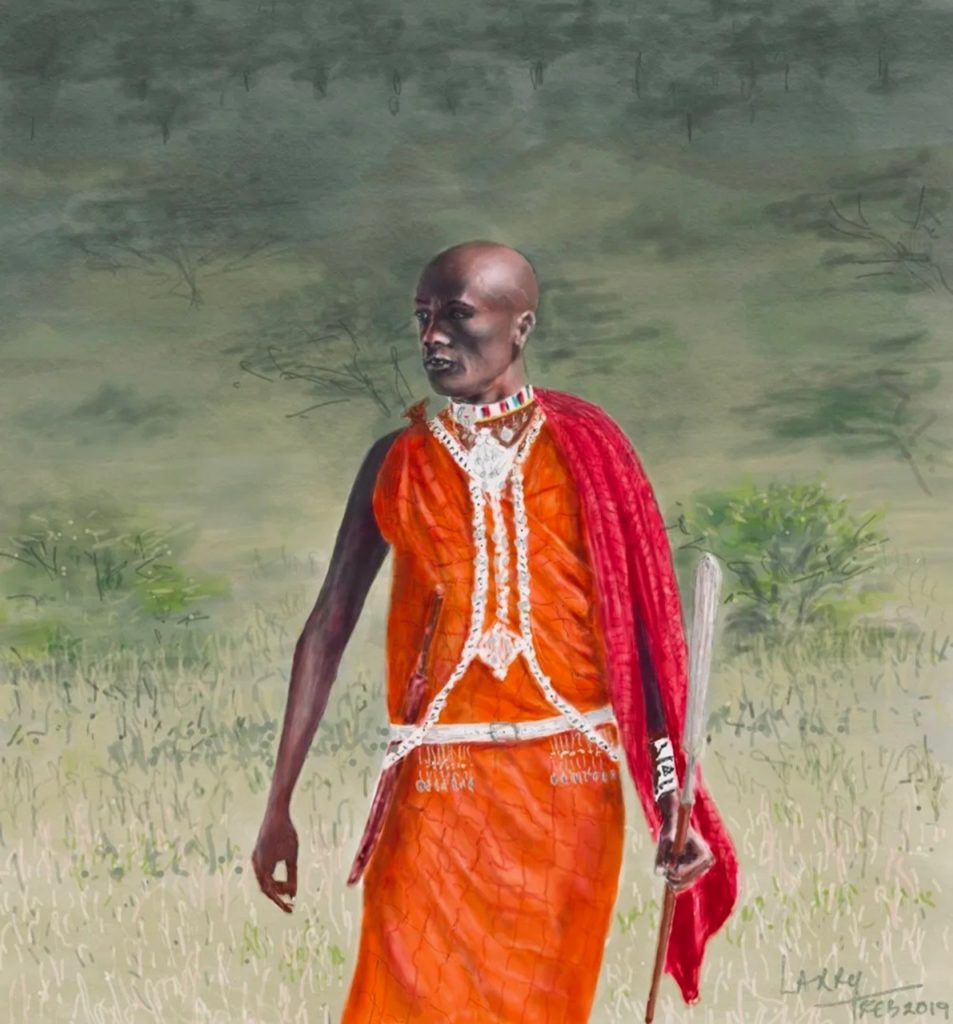 This watercolor painting of Lekoko really shows the vibrancy of the colors of the Maasai clothing. Maasai men predominately appear to wear shades of red.
This watercolor painting of Lekoko really shows the vibrancy of the colors of the Maasai clothing. Maasai men predominately appear to wear shades of red.
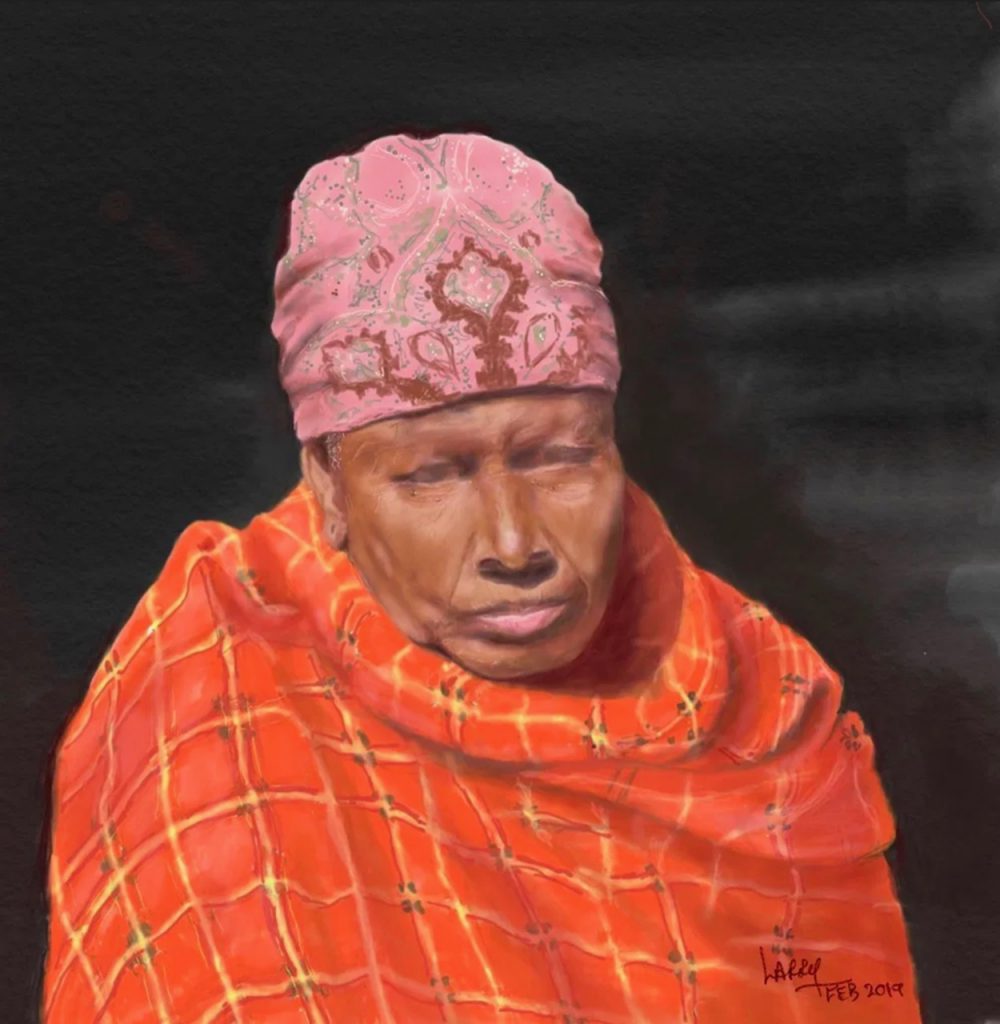
This watercolor is of an old lady I photographed in one of the villages we drove through. I wasn’t certain if she was a Maasai or not. Again I was struck by the vivid color in her plaid shawl and the intricate pattern in her head scarf.
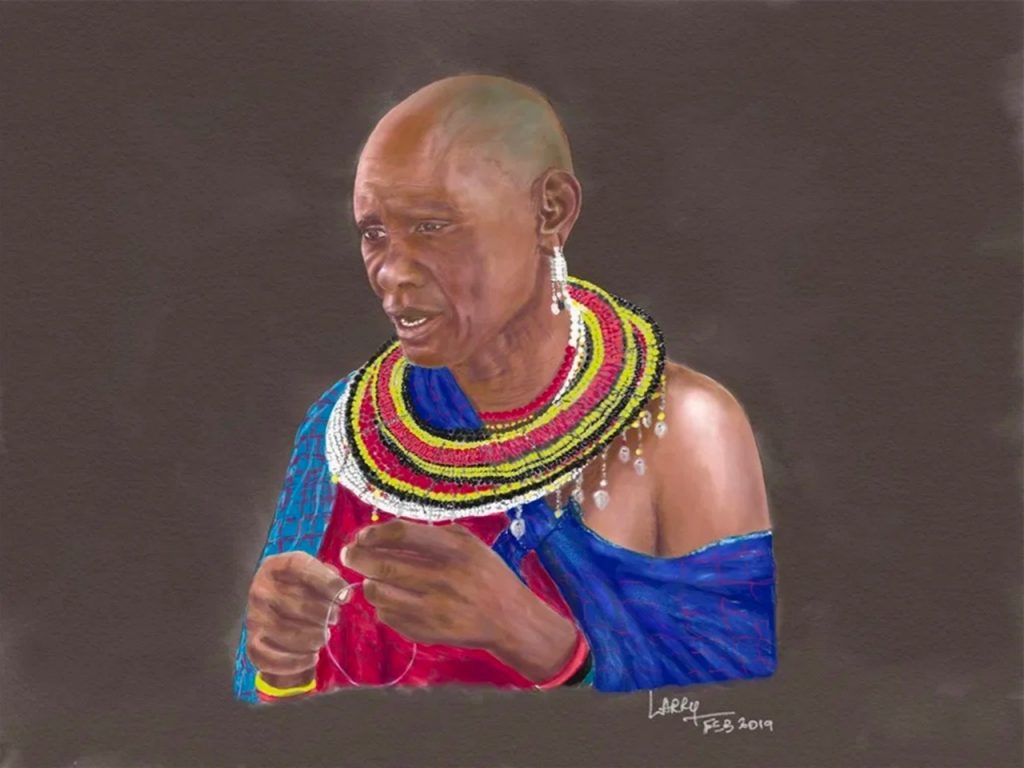
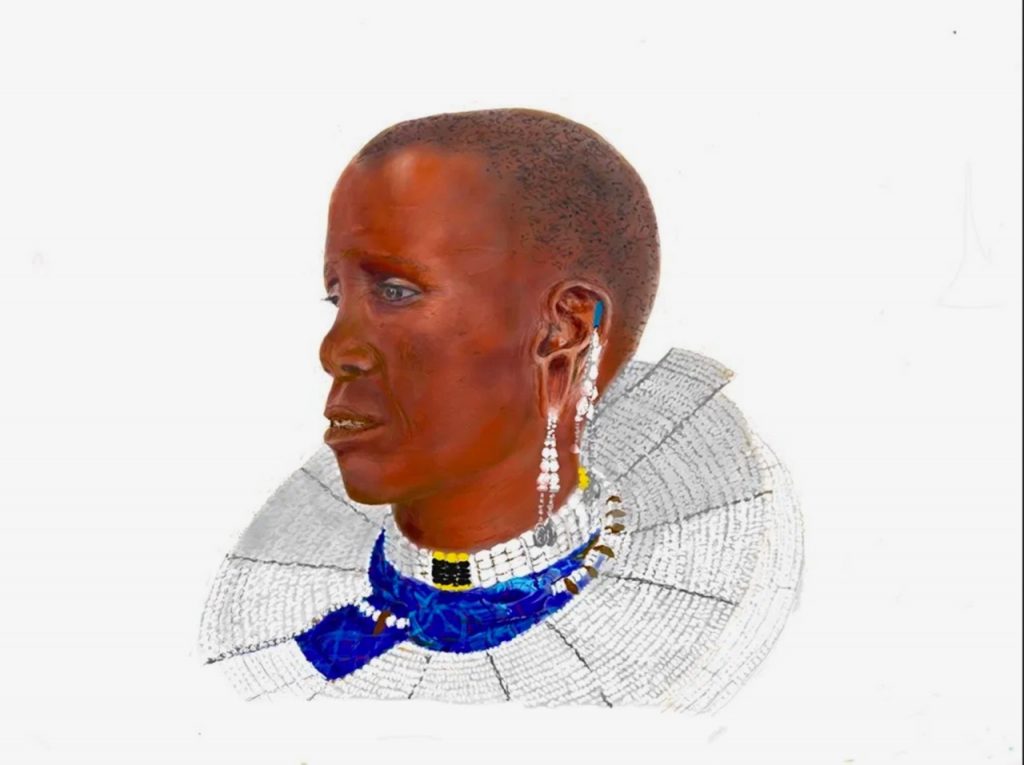
In one of the Maasai villages we visited, these two ladies caught my eye because of their neck rings, intricate earrings and, in one of the paintings, the extended ear lobes.
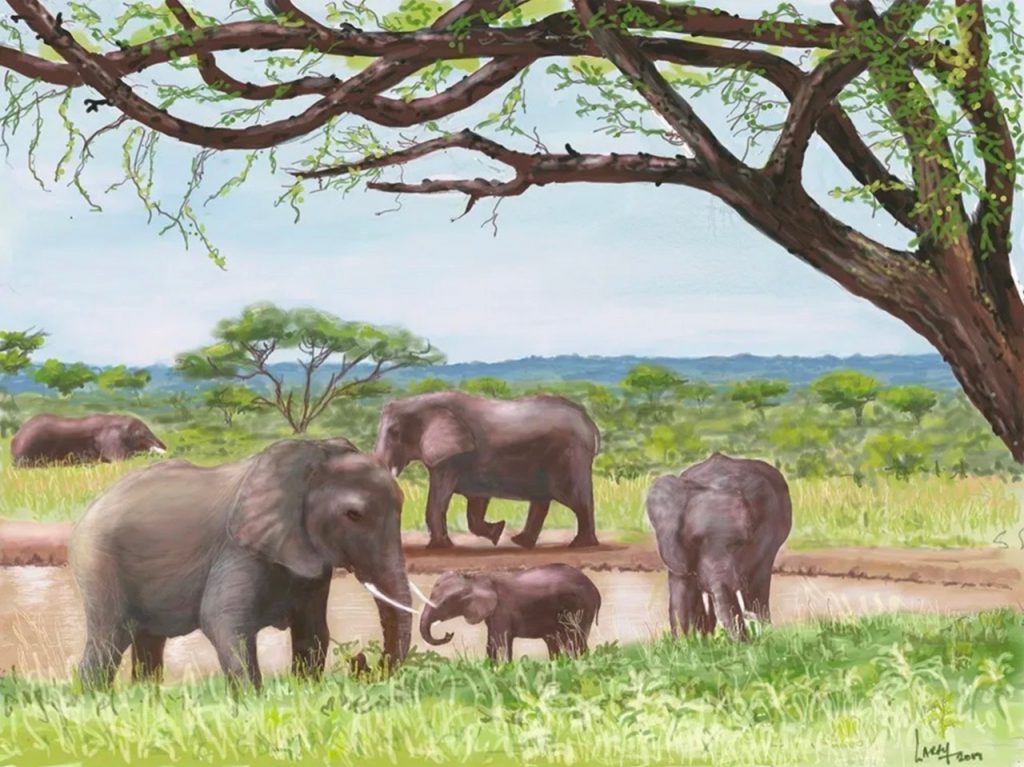
This watercolor is of an elephant family at a waterhole. When I took the photograph I was taken by how serene the scene was with the mother elephant, baby, and juvenile in the foreground and the other elephants in the background.
On one of our days during our safari in the Serengti, Tanzania we visited a Maasai village. We met the village chief and his many wives danced for us. This lady was one of them. Additionally, some of the young men performed a stick dance and jumping routine for us that emulates a very painful stick fight that youngmen must endure during their initation into manhood. I was invited, along with my good friend and artist Thierry Lamare, to join in. All I can tell you is this initation is no joke. It was painful enough for me just holding and jousting with the stick… without also being beaten by it
When photographing, or painting, a random person we capture a moment in time usually not knowing anything about that person. It is certainly not enough to ask, or wonder, how their day is going. When photographing or painting persons from an indigenous culture, like the Maasai, wondering how their day has been going is meaningless. More to the point…. What has the life of this Maasai woman been like? In painting this woman I was surprised to see hardship and suffering emerge on my brush (pen) that I had not been conscious of when I started the painting. I would have liked to have captured a more serene and happy demeanor, however, it was not to be. It reminded me of when I was painting the Haitian sloop depicted in my painting “Becalmed”. To capture the essence of the sloop I had to examine how it was constructed and in that case I was surprised to see that it was made up mostly of rough lumber, sticks and raw canvas. http://larryrobertsartist.com/becalmed/
Painting this Maasai woman was much the same. I saw subtleties that I might otherwise have missed, such as… slightly yellow in the eyes, crooked, worn or broken yellowed teeth, a fly on her forehead, a slumped posture and a vacant stare. When I took the photograph that I used as a reference for this painting, the woman had just finished a tribal dance with others, but clearly she was in a trance and in her own world .
s.


